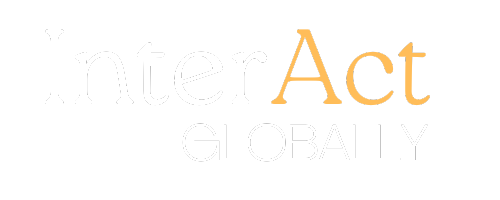The human body speaks a language of its own-one that often communicates with a lot more power than words can ever hope for. Indeed, as found out from ground-breaking research conducted by Dr. Albert Mehrabian at UCLA, 93% of our communication is non-verbal and a whopping 55% of the message we try to put across comes through in the form of body language. Mastering this silent language in today’s cutthroat business arena is an advantage-it is an imperative.
Understanding Body Language: The Foundation Recent studies from Harvard Business Review (2023) show that non-verbal signals are more than four times more powerful in creating first impressions than verbal signals. The famous 7-38-55 rule breaks down communication into three core components: 7% verbal (actual words), 38% vocal (tone, pitch, and pace), and 55% visual (body language and facial expressions).
The Three Zones of Non-verbal Communication
1. Upper Body Zone (Head and Face) Your face represents the most expressive part of your non-verbal armory. According to various researches, facial expressions hold universality across cultures, especially for fundamental emotions. The University of Texas Permian Basin (2024) says that there are consistent facial expressions that have increased leadership credibility by up to 50%. Mastering micro-expressions and maintaining correct facial reactions can really raise your effectiveness in communication tenfold.
2. Middle Zone (Torso and Arms) The middle zone consists of your stance, chest position, and arm motion–major factors that impact how people view your self-assurance and command presence. According to studies in the Harvard Business Review, positive body language in this zone can boost team engagement up to 35%. Confidence is shown by standing tall with one’s shoulders back and chest open, whereas one might set up barriers if their arms are crossed.
3. Lower Zone: Legs and Feet This is the most neglected part of your body, yet your lower body can give you away. According to researchers, becoming a master of full-body awareness can increase your executive presence by as much as 40%. A grounded, balanced stance will literally and figuratively help you “stand your ground” when you’re in a business situation.
The Theatrical Approach to Body Language
We can learn to make our bodies more expressive from the theater:
1. Conscious Awareness: First, much like actors, who are aware of every single movement in the stage, professionals have to develop an enhanced sense of awareness of body language. This does not mean a rigid awareness but an understanding of the way your body communicates.
2. Space and Movement Forbes (2024) says 72% of business leaders believe effective use of space and movement has increased their team’s productivity. Whether in presentations or meetings, your relationship with physical space can either enhance or diminish your message.
3. Purposed Gesturing
There should be a reason behind every movement. Studies have shown that purposive gesturing can improve message recall as much as 33%. Irregular or anxious gestures detract from your message, while regular, meaningful ones accentuate key points.
Common Body Language Mistakes and How to Avoid Them
1. Mixed Signals
When your body language and words don’t match, people always believe the non-verbal. Make sure your physical presence and verbal communication are congruent.
2. Cultural Misunderstandings
Body language varies significantly across cultures. Recent studies show that cross-cultural body language awareness can improve international business success rates by 40%.
3. Over-gesturing
While gestures can enhance communication, too many become distracting. Focus on quality over quantity, using deliberate movements that emphasize your key points.
Practical Tips for Improvement
1.Record Yourself
Video recording your presentations provides valuable insights into your unconscious patterns.
2. Practice the “Power Pose”
Stand in a confident posture for two minutes before important meetings or presentations. Research proves this actually boosts confidence levels and enhances performance.
3. Mirror Your Audience
Subtle mirroring of your audience’s body language helps to build rapport and trust. However, it should be natural and subtle so as not to appear manipulative.
4. Master the Pause
Sometimes, the most powerful non-verbal communication is stillness. Learning to be comfortable with strategic pauses can add emphasis to your message and command attention.
The Digital Age and Body Language
In our increasingly virtual world, body language has taken on new dimensions and challenges. Recent studies from the Global Business Communication Institute (2024) reveal fascinating insights about non-verbal communication in digital spaces:
Virtual Presence Mastery Research shows that 67% of professionals struggle with maintaining effective body language in virtual meetings. The camera frame creates a new “stage” for our non-verbal communication, requiring specific adaptations:
• Position yourself at eye level with the camera to maintain direct eye contact
• Use deliberate hand gestures within the frame to enhance engagement
• Maintain proper posture even when sitting for extended periods
Hybrid Communication Challenges With the rise of hybrid work environments, professionals must master what experts call “dual presence”-the ability to engage both in-person and virtual audiences simultaneously. Studies show that leaders who excel in this area achieve 45% better team collaboration outcomes.
Screen Fatigue and Body Language
The so-called “Zoom fatigue” greatly influences our non-verbal ways of communication. Being aware of how to sustain energetic body language with the management of digital fatigue is an emerging skill. These include:
• Regular resetting of posture in long virtual sessions
• Intentional breaks to maintain energy with movement
• Gesturing adapted to camera visibility
Transform Your Communication Impact: Take Action
Ready to learn the language of your body? Our unique courses, fusing theatrical techniques with professional business applications, give you an innovative approach to the mastery of non-verbal communication. With proven success rates, we can help you:
• Improve your leadership presence
• Enhance your cross-cultural communication effectiveness
• Better your negotiation outcomes
• Increase the engagement and productivity of your team
Our Holistic Stage Presence programs include theater-based methodologies that have enabled business professionals across the world to make a difference in the way they communicate. Be it critical presentations or an international business meeting, this approach equips you with weapons that will distinguish you from the rest.
Let your body language not be an obstacle to your success. Be one of the ever-growing family of confident communicators who can say, “I know what I am communicating even without speaking.
Bibliography
1. Mehrabian, Albert. Silent messages : implicit communication of emotions and attitudes
2. Harvard Business Review (2023). “The Impact of Non-verbal Communication in Business Settings”
3. Forbes (2024). “Body Language Is The Missing Link In Effective Communication”
4. The University of Texas Permian Basin (2024). “Leadership and Body Language Study”
5. International Journal of Leadership Studies (2023). “Non-verbal Communication in Executive Presence”
Let your body language not become the limiting factor to realization. Contact us today and understand more about our Transformational Communication Courses. A course that will help you make all the right moves for true mastery over non-verbal communication.

